Diabetes mellitus is a fairly serious disease to which almost one in four people is susceptible to statistics. With more than 350 million patients today, the diabetes diet is being thoroughly studied, which experts say should be followed not only by patients but also by people prone to developing the disease.
Overweight, genetic predisposition, or stomach illness can lead to a sharp cessation of insulin production and other unpleasant manifestations, and adherence to a diet will be a necessary measure to maintain normalcy.
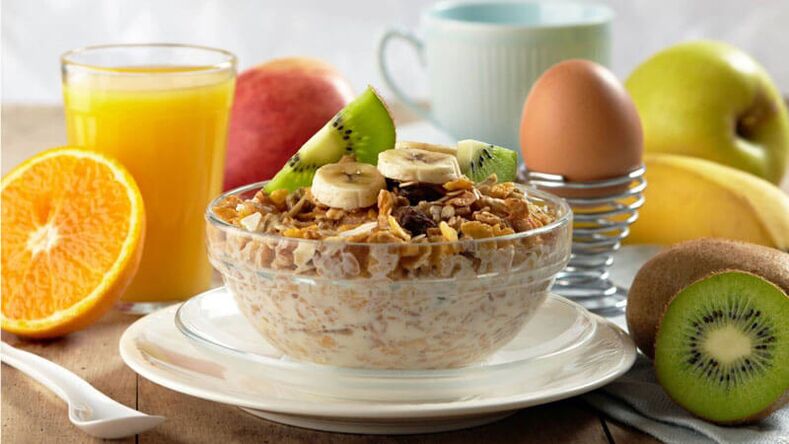
Nutritional characteristics of diabetes mellitus
The diet of diabetes can vary significantly depending on the type of disease. There are usually 2 main types of diabetes, where there are several forms and rules of nutrition due to the causes of metabolic disorders and the conversion of sugar to glucose.
But all types of illness require adherence to general eating habits.
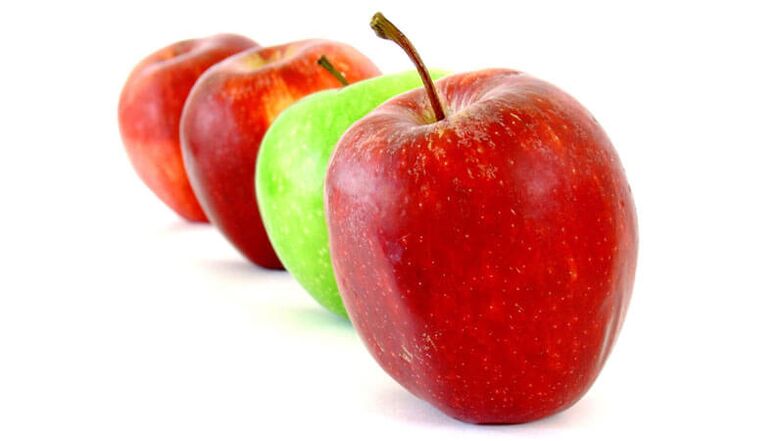
Basic Nutritional Guidelines for Diabetes
Diabetes nutrition should be done with strict adherence to basic rules. So for both types of disease, the following aspects are in the diet:
- The diet should contain a balanced proportion of protein, fat and carbohydrates relative to the presence of the disease.
- The number of meals should be slightly increased. So you should eat small portions every 3-4 hours, foods for diabetics should be low in calories.
- The caloric content of foods and meals should be calculated carefully and carefully - it should not exceed your daily energy intake. Otherwise, the likelihood of weight gain increases, leading to complications in diabetes.
- Almost all diets follow the basics of a proper and balanced diet for patients with the disease presented. Vegetables and fruits, carbohydrates and proteins should be included in the diet, do not ignore fats and amino acids.
It should be noted that all patients should consult their healthcare professional about the nutritional basics for their particular case. It is not recommended to follow a specific diet, even if it is intended for diabetics, without consulting a doctor.
The attending physician must calculate the patient's caloric content and make certain changes according to the individual characteristics of the body.
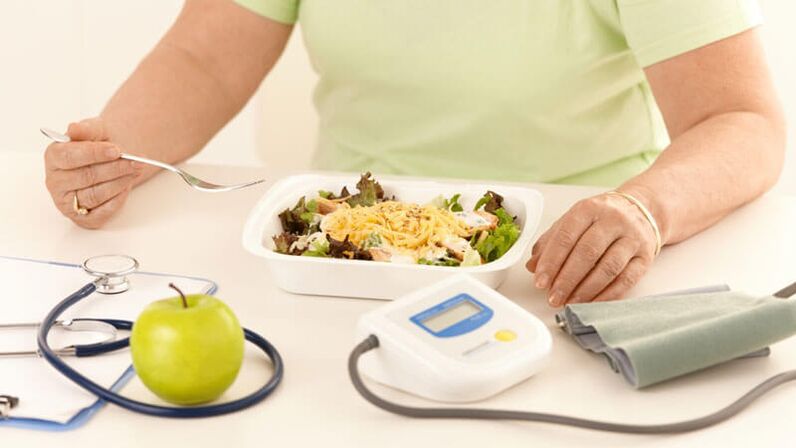
Type 1 diabetes and diet
Strange as it may sound, the diet for type 1 diabetes is based on the correct dosage of insulin, so it is worth considering the consumption of foods that significantly increase blood sugar levels.
It turns out that there are no dietary restrictions for such patients, all that is needed is proper insulin accounting and timely delivery. The following principles and rules for the administration of insulin can be found here:
- Foods that are low in carbohydrates should not be considered. For example, meat and fish, eggs and cheese, cottage cheese and butter may be consumed in reasonable quantities, but their consumption should not be reduced or eliminated.
- Only carbohydrate products can be counted - these are flour and confectionery products, as well as vegetable products and liquid dairy products.
Insulin should be administered according to the amount of food consumed. You also need to adjust to food consumption over time. Here you should follow the following principles and rules for insulin dosing:
- if treated with short-acting insulin, it is introduced 20 minutes before a meal;
- if treated with intermediate-acting insulin, it is introduced 40 minutes before a meal;
- When using a combination insulin, the schedule is 20 minutes before breakfast, every 3 hours during the day and half an hour before a full meal.
The dose of insulin should be calculated based on the amount of food consumed. The calculation is done by calculating the bread units (XE).
The unit is a piece of 25 g of bread (10 to 12 g of carbohydrate) that increases a person’s blood sugar level by 1. 8 mmol / l.
Your doctor can tell you the calculations exactly. In addition, to calculate the exact dose of insulin, you should consult the table that shows the carbohydrate content of each product.
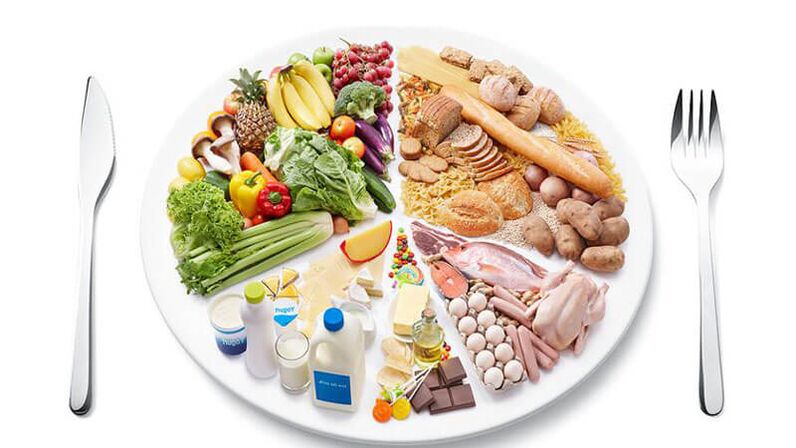
Type 2 diabetes and diet
The diet for type 2 diabetes is significantly different from the diet for type 1 diabetes. Not only should the products approved for consumption be considered here, but the caloric content of the daily diet should also be carefully monitored. So here are the following indicators:
- the normal daily caloric content should be in the range of 1600-2500 kcal, depending on the patient's weight and energy intake;
- in the presence of excess weight, the caloric content is necessarily reduced to 1300-1500 kcal;
- if you are overweight, your doctor may reduce your caloric intake to 1, 000 kcal per day;
- there are cases where being overweight is significantly above the norm and the daily caloric content is reduced to 600-900 kcal.
The caloric content of the food should be calculated by the attending physician as it takes into account not only the person’s weight indicators but also the presence of diseases such as arrhythmias, severe chronic diseases, gout and mental disorders.
The diet of people with type 2 diabetes is as follows:
- The carbohydrate content of the total daily diet should not exceed 55%. Preference should be given to products that are saturated with vitamins, minerals and dietary fiber. For example, wholemeal breads, wholemeal grains, legumes and vegetables. As for sugar-containing products, they have been completely abandoned. Instead of sugar, it is permissible to consume xylitol or sorbitol in a proportion of 0. 5 g / 1 kg of patient weight, divided into 2-3 doses at the same time.
- Proteins in patients with type 2 diabetes are allowed according to the physiological norm of a healthy person - 90 g per day. Preference should be given to lean meat in the form of poultry, lean fish and cottage cheese. The daily protein intake in the diet is 15-20%.
- 30% of the daily dose contains fats, which are absorbed to a greater extent from vegetable oils.
- They consume limited amounts of salt and fatty foods.
Experts advise you to take the diet of diabetics seriously. It is better to create a menu for every day, 2-3 days or even an entire week.
It will not be unnecessary to present it to the treating physician, who may modify it according to the patient's state of health.
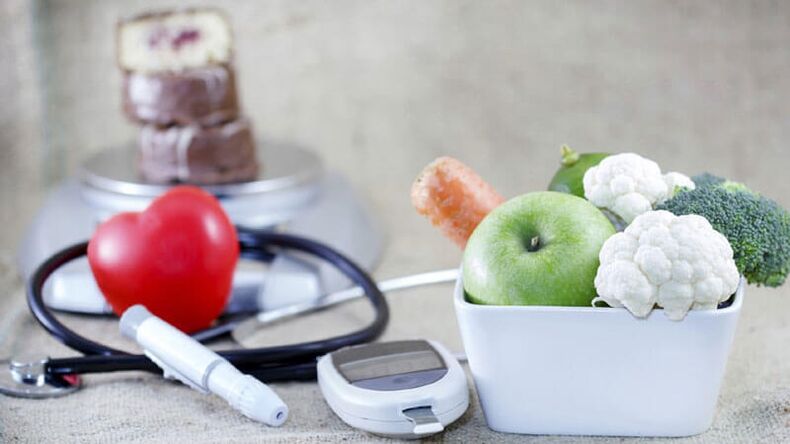
Characteristics of a low carb diet in type 2 diabetes
Most people with type 2 diabetes are usually overweight, which requires immediate cessation to make it easier for a person to tolerate the disease and not expose the body to sharp and significant blood sugar "jumps. "
Thus, many experts recommend a low-carb diet for type 2 diabetes. What is that?
Scientists have suggested that it is quite difficult for sick people to adhere to proper nutrition and basic principles immediately after the disease is diagnosed.
In addition, the main task here is to lose excess weight, so the patient must reduce their caloric intake, which is not always possible.
So a person starts to suffer from a sharp drop in blood sugar levels due to constant hunger. Scientists say this can easily be avoided by consuming more protein.
Protein foods are great for losing weight. In addition, protein foods are the safest in diabetes. This diet is more reminiscent of the well-known "Kremlin. "
But such a diet should only be used with the permission of the attending physician, as the intake of large amounts of protein in the body can be dangerous to health and can worsen chronic diseases.
It is recommended that diabetics take special vitamins prescribed by their doctor if they follow the diet shown.
Principles and basics of the "Table 9" diet
Most professionals support not only proper nutrition but also the use of special medical diets.
Thus, especially for patients with the presented disease, a "9. A diet called "Table 1" has been developed that corresponds to the approved list of all medical nutrition funds.
It shows you exactly how to eat right in case of diabetes, lists the foods that are allowed and forbidden.
The menu presented can also be divided into two categories, corresponding to disease types 1 and 2. But there are general principles that need to be learned and adhered to in order to maintain normal blood sugar levels.
The principles of the "Table 9" diet
The diet presented contains principles that should be followed without any questions. These include the following aspects:
- You can eat up to 6 times a day. The main feature is to eat every 3 hours in small portions.
- The menu for diabetics is put together without fried, spicy, fatty foods.
- Only cooked, steamed and fried foods can be eaten.
- The sweets of diabetics should be replaced by the addition of natural products or sweeteners.
"Table 9" contains a complete list of foods rich in vitamins and other beneficial micronutrients that may be consumed. It is worth paying attention to fruits with a high content of ascorbic acid, which can be consumed in small amounts during the day.

What to eat with diabetes
The diet presented is a complete indication to patients of what to eat for any type of diabetes mellitus. It is advisable to include these foods in your diet to maintain your sugar levels and prevent complications. The authorized products are:
- all flour products made from wholemeal cereals and wholemeal flour;
- low-fat sausages with fatty inclusions;
- all fish species related to low-fat species;
- all kinds of lean meat;
- greens and green vegetables;
- low sugar fruits;
- oatmeal, buckwheat and millet are allowed from cereals;
- any low fat dairy product;
- tea, freshly squeezed juices from approved fruits and vegetables, herbal teas from beverages are allowed.
Approved foods are consumed according to the above rules and characteristics, depending on the type of disease.
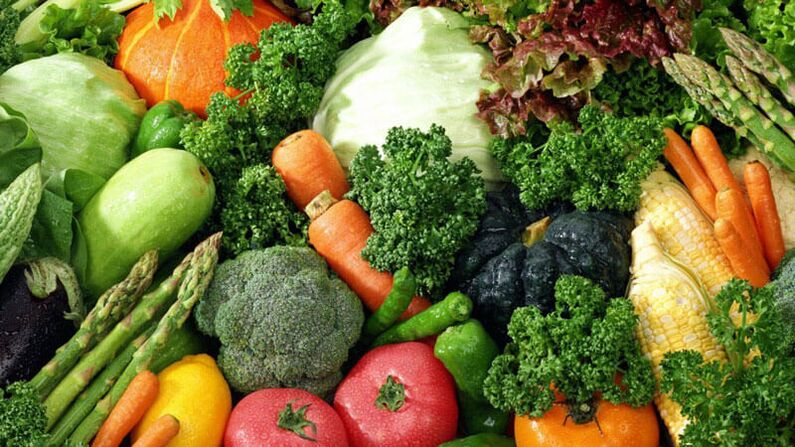
What not to eat with diabetes
The "Table 9" diet contains a list of prohibited foods, which should be consumed with the utmost vigilance and accuracy. The list of prohibited products includes:
- all types of confectionery, including high-sugar confectionery (types of jam);
- fatty poultry meat;
- salinity in the form of salted fish, salted preserves and other pickles;
- fatty and drinkable fermented milk products such as fried milk, cream and yoghurts;
- you can not eat strong broths;
- pasta, rice and semolina are forbidden - they increase sugar levels;
- spices, condiments, snacks;
- sweet fruits;
- industrial juices from packages - high in sugar;
- any alcoholic beverage.
The type of disease in this case does not in any way affect the possibility of consuming prohibited foods. Experts say even type 1 diabetics need to follow a diet to avoid aggravating the situation.
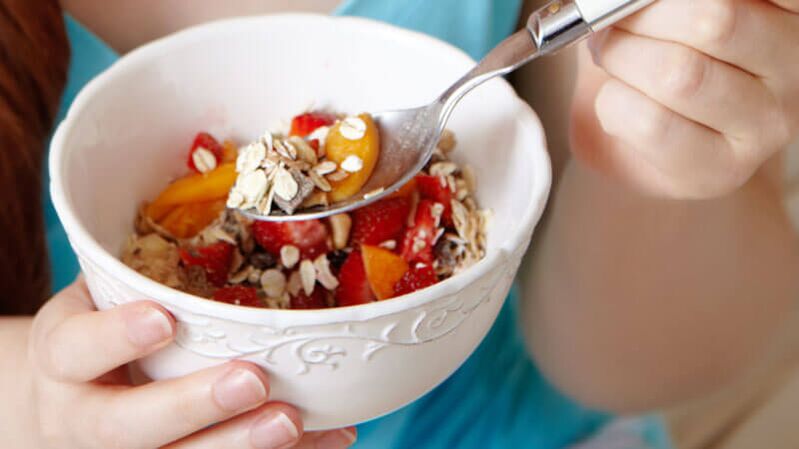
Controversial fruits and vegetables in diabetes
There are a number of controversial issues in the diet of diabetics. It is said that natural products, including spices are allowed, doctors themselves are starting to restrict the use of patients. What is the reason of this?
Controversial fruits in diabetes
The article has repeatedly mentioned that unsweetened fruits can be consumed in the presence of the disease presented. They are low in sugar and therefore do not harm the patient in any way.
However, even patients with extensive experience do not know exactly what fruits to eat in diabetes. There is no need to talk about a ban on the use of grapes, but there are a number of controversial fruits, including:
- Persimmon. It is possible to eat persimmons in diabetes if the taste is vaguely similar to sweet. This fact is what bothers most patients.
As it turns out, this fruit is actually high in vitamins, amino acids, trace elements and sucrose. This fact allows the use of persimmons even for patients as it has a beneficial effect on the body. But this fruit also has a high glycemic index - 70%.
It turned out that persimmons can eat, but only in limited quantities - 70 g of fruit 1 XE. Persimmons with type 2 diabetes can also be consumed, but in limited quantities - up to 1 fruit per day.
- Mandarin. Citrus fruits are allowed for diabetics, but in moderation. But whether to eat tangerines with diabetes is a contentious issue.
The fact is that tangerines contain large amounts of carbohydrates, leading to a sharp rise in blood sugar levels in patients with diabetes. Therefore, experts advise not to consume tangerines, even in moderation.
- Watermelon and melon. By the end of the summer, the melon is ripe, which encourages patients to eat watermelon and melon.
These berries have a high glycemic index of 75% and 65%, respectively. This leads to a sharp release of sugar into the patient’s blood, which causes malaise and fainting.
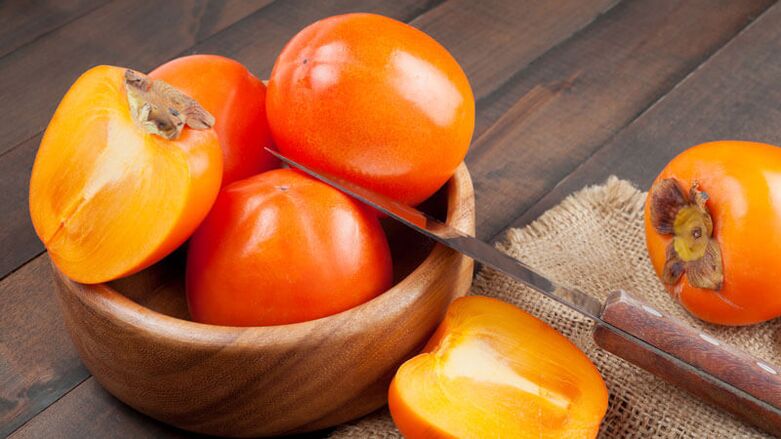
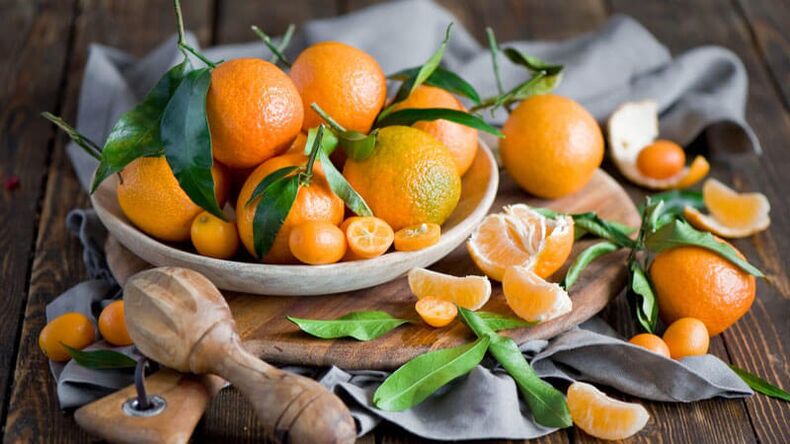
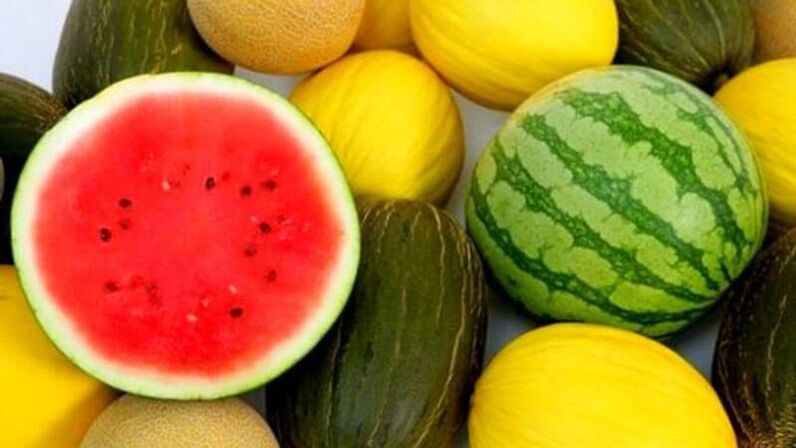
These products for diabetics are prohibited or bread should be used. All patients should consult their physician who can calculate the amount of fruit to be consumed.
Controversial vegetables and roots in diabetes mellitus
The use of vegetables in diabetes is also under discussion.
Many patients do not even realize that vegetables and root crops such as potatoes, carrots, beets and tomatoes are under the strictest ban.
The vegetables listed are high in glucose, starch and sugar, which is unacceptable for patients with diabetes.
The following products should also be considered:
- Jerusalem artichoke for diabetesIts use is recommended for many experts. It contains many amino acids, trace elements and inulin, which is at least 80%. This enzyme is a polysaccharide with several fructose chains. It has been shown that this root vegetable should not be consumed in unlimited amounts but should be included in the diet of diabetes as it has benefits in preventing the occurrence of gastrointestinal diseases.
- Pumpkin is a useful vegetable for diabetics. It contains large amounts of protein, carbohydrates, fiber, which has a positive effect on weight control and maintenance, and also contributes to weight loss. As a result, it is imperative to eat pumpkin with type 2 diabetes mellitus, just pay close attention to the amount of product in one serving, because here too, the sugar content is high.
- Sauerkraut, which suffers from diabetes, is also the subject of much controversy, as, as mentioned above, salting patients is prohibited. However, this type of salting is allowed for patients with type 2 diabetes. Cabbage and pickles improve metabolism, resulting in gradual weight loss. In addition, there are useful properties for the work of the gastrointestinal tract. Therefore, you can use sauerkraut, but only in small amounts.
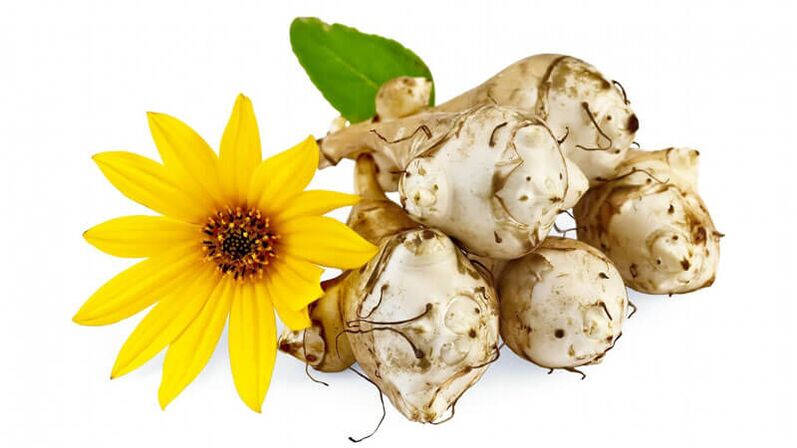
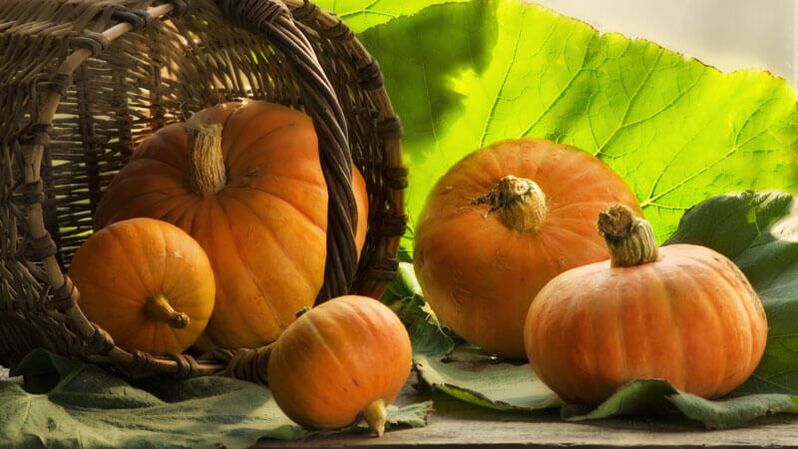
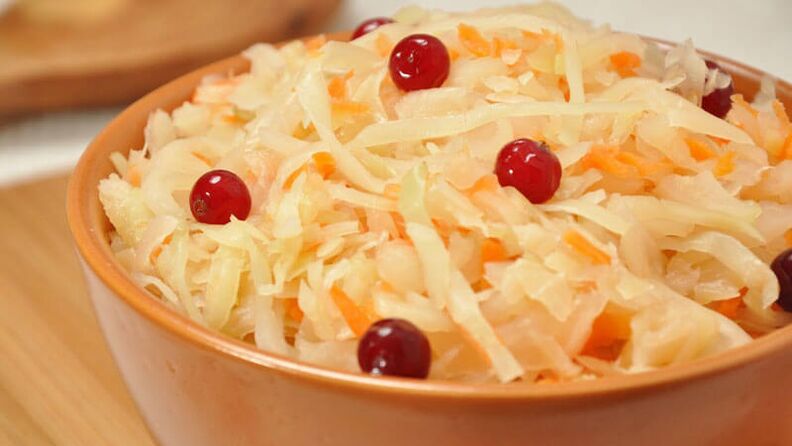
A review of recipes for diabetics may reveal much interest in the use of foods, including vegetables and fruits.
Here you need to carefully consider the amount of products needed for cooking. If necessary, calculate the amount of food consumed.
Healthy foods for diabetes
For diabetics, some natural products only have a beneficial effect on the functioning of the entire body. For example, you can't completely rule out glucose. It is the basis of most processes in the human body that function as an integral part of it.
Based on the need for and benefits of using natural products for diabetes, scientists provide a list that lists the qualities to follow when choosing and formulating a diet.
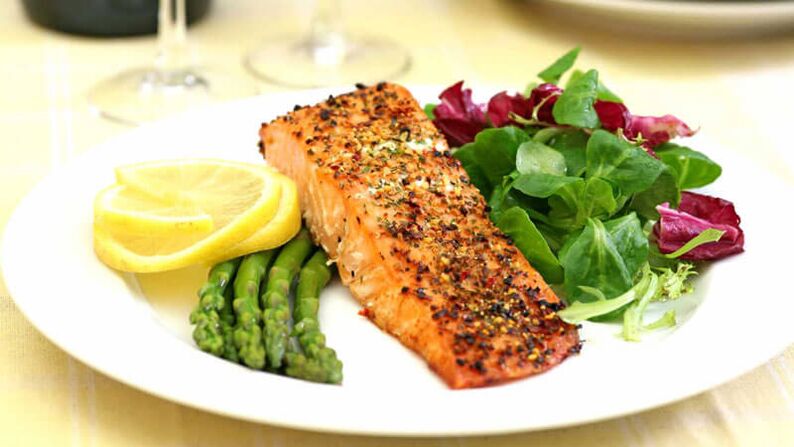
Honey
Most patients refuse to consume honey. It seems to contain a lot of sugar and glucose. As it turns out, this natural product contains only 40% sucrose. But it contains the same amount of glucose, which is why honey that is banned in diabetes can be used.
Nevertheless, experts say honey is simply irreplaceable in diabetes. They can trigger normal and regular sugar.
A serving of honey for type 2 diabetes should not exceed 1-2 tablespoons. Divide into several steps: add to baked goods or tea.
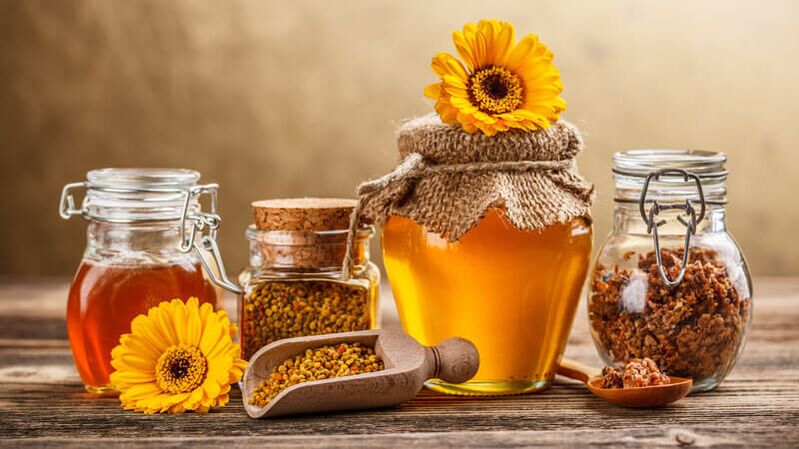
Cinnamon
Cinnamon is mandatory for patients with type 2 diabetes. The composition of the spice increases the sensitivity of the cells in the body to the insulin they produce, which helps to normalize and lower blood sugar levels.
In addition, cinnamon in diabetes helps cleanse blood vessels and internal organs of toxins and toxins, which has a positive effect on the prevention of thrombophlebitis and other serious diseases.
Add half a teaspoon to your tea or coffee for a pleasant cinnamon topping. You can sprinkle each dish with a little spice to suit your tastes and preferences.
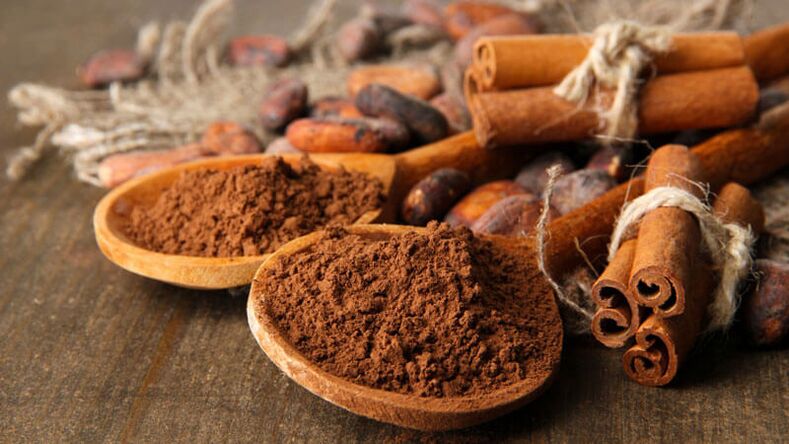
bay leaf
It is necessary for the use of bay leaf in people with diabetes, but is contraindicated in severe diseases. So this natural product should be used to boost immunity, speed up metabolism, cleanse the body of toxins and toxins.
On the other hand, bay leaf should not be consumed by those with late-stage diabetes, kidney disease, or stomach ulcers.
Bay leaf is mandatory in type 2 diabetes, where the patient is overweight and has high cholesterol.
The use of bay leaf in the form of a dressing for pots is permitted, but the infusion is still more useful. To prepare, take 10 bay leaves and pour three glasses of boiling water.
Allow the infusion to infuse for 3-4 hours. Take 100 g three and a half hours before meals. This will help keep your glucose levels at the right level.

Stevia
Almost no one knows about the benefits of stevia in diabetes, but regular infusion helps maintain glucose levels, strengthens blood vessels, lowers cholesterol and blood pressure, and significantly improves blood microcirculation.
The collection is easy to buy at the pharmacy. It should be cooked according to the instructions presented, the herbal tea should be drunk hot in small sips.
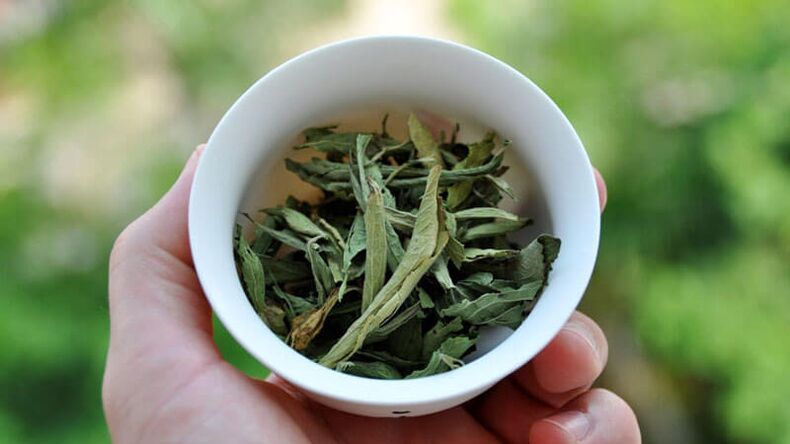
Eat right with diabetes, according to the basic recommendations of experts. This way, you can keep your blood sugar levels healthy and feel good in any emergency.




















